We included HMH Into Math Grade 4 Answer Key PDF Module 13 Lesson 1 Explore Lines, Rays, and Angles to make students experts in learning maths.
HMH Into Math Grade 4 Module 13 Lesson 1 Answer Key Explore Lines, Rays, and Angles
I Can identify, draw, and name angles.
Spark Your Learning
Star charts are used to identify constellations in the night sky. One of the most identifiable constellations is the Big Dipper. You can use two of the stars from the Big Dipper to help you find another star, Polaris.
Use the Big Dipper constellation and the star Polaris to find and label an example of a point, a line segment, a ray, and an angle.
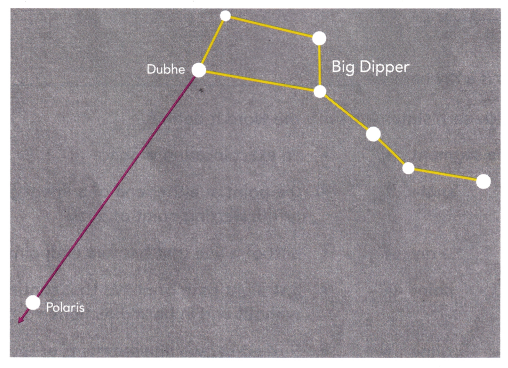
Answer:
Polaris, Big Dipper and Dubhe are the three points.
Big Dipper to Dubhe and Polaris to Dubhe is a line segment.
Polaris is a ray.
Explanation:
A point in geometry is a location. It has no size i.e. no width, no length and no depth. A point is shown by a dot
Polaris, Big Dipper and Dubhe are the three points.
A line segment is bounded by two distinct points on a line, or we can say a line segment is part of the line that connects two points.
Big Dipper to Dubhe is line segment and Polaris to Dubhe is line segment.
Polaris is a ray with one end point.
An angle is formed by two lines that begin at a common point.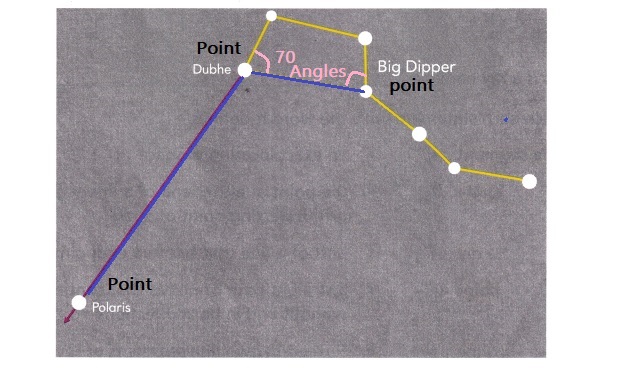
Turn and Talk How are your choices for each word alike or different?
Answer:
Different
Explanation:
As explained above point is different from ray, ray is different from line segment, angle is different from ray and so on.
So, each one is different from one anotherr.
Build Understanding
Question 1.
Star charts use points, lines, line segments, rays, and angles to help the user identify constellations in the night sky. Without these, the constellations would be more difficult to find. An understanding of these terms will help with reading a star chart.
A. Circle the line segment.

This is a line segment because ____________
Answer:

Explanation:
This is a line segment because, it has two end points, R and S.
B. Circle the ray.

This is a ray because ____________
Answer:
FG is a ray because, it starts from F and going towards G, no end

Explanation:
A ray is a part of a line that has a fixed starting point but no end point.
It can extend infinitely in one direction, F and G is a ray.
C. Match each statement with the word it defines.
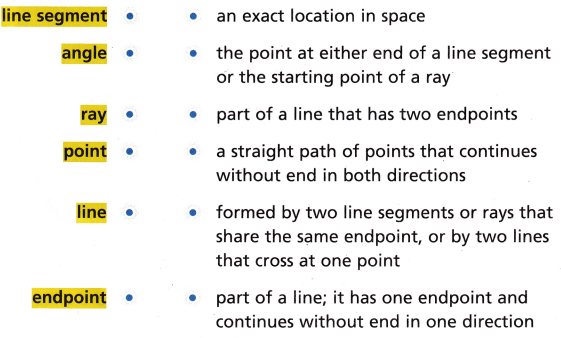
Answer:
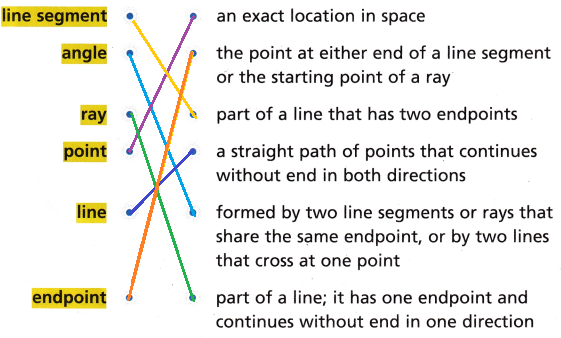
Explanation:

Line segment is a part of line that has two end points.
Angle is formed by two line segments or rays that share the same end point.
Ray is a part of line it has one end point and continues without end in one direction.
Point an exact location in space.
Line is a straight path of points that continues without end in one direction.
End point is the starting point of the ray.
Question 2.
Nate draws a star chart for part of the constellation Libra on a piece of paper representing a plane. A plane is a flat surface that extends without end in all directions.

Draw and label a point, a line segment, and an angle from Nate’s star chart.
Answer:

Explanation:
BI is a line segment, RBI is an angle.
Turn and Talk How is a line different from a line segment? How is a line different from a ray?
Answer:
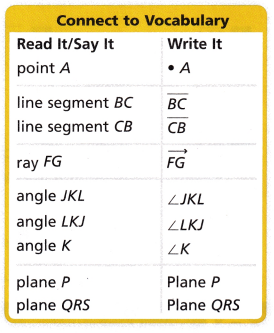
Explanation:
Line segment is a part of line that has two end points, BC or CB
Ray is a part of line it has one end point and continues without end in one direction, FG.
Line is a straight path of points that continues without end in one direction.
Check Understanding
Question 1.
A compass is a tool used to determine which direction is north. Draw and label a point, a line, and a ray from the picture.

Answer:

Explanation:
Center point C is
Ray is towards North N
CN is a line showing towards North
Question 2.
Name an angle shown in the picture.
Answer:
NCE is an angle
Explanation:
It is a right angle between North and East.
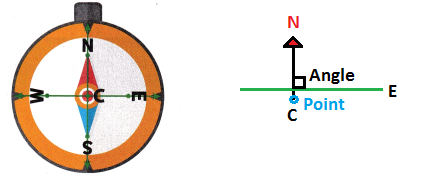
On Your Own
Question 3.
Model with Mathematics Many constellations form geometric figures. A part of the constellation Ursa Major shows a triangle. Use the triangle to help you complete the problems.
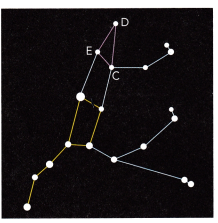
Name three points.
Answer:
C, D and E are points in the given picture.
Explanation:
Point an exact location in space or given figure.
Draw and label a line segment.
Answer:
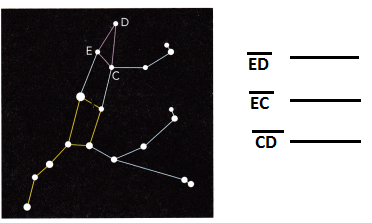
Explanation:
Line segment is a part of line that has two end points.
ED, EC and CD are line segments.
Name an angle.
Answer:
Angle EDC
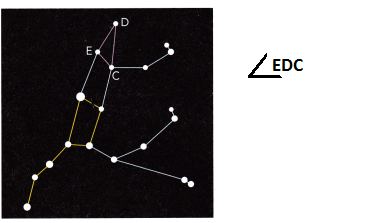
Explanation:
Angle is formed by two line segments or rays that share the same end point.
Draw and label an example of each figure.
Question 4.
\(\overline{X Y}\)
Answer:

Explanation:
XY is a line segment, with two end points.
Question 5.
\(\over right arrow{T E}\)
Answer:

Explanation:
TE is a ray that has one end point and continues without end in one direction.
Question 6.
∠MNO
Answer:

Explanation:
MNO is an angle formed by two line segments or rays that share the same end point.
Question 7.
Reason A laser light can make all sorts of beams of light. How do you know what figure this laser light shows?
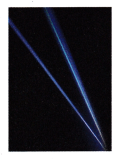
Answer:
Rays are projected from a point P (starting point or Originating point of ray)
the rays travel to distant end, no end point for Ray.
I’m in a Learning Mindset!
What decisions did I make when solving Problem 7?
Answer:
I come to know how rays are formed and where the rays are used in day to day life.
Explanation:
Rays are used in the light house at sea shore and new launch start marketing points use this rays.
Rays are projected from a point P (starting point or Originating point of ray)
the rays travel to distant end, no end point for Ray